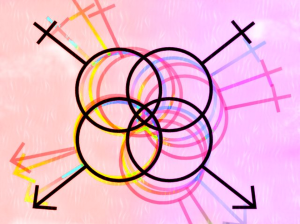Stories by Carmen Maria Machado
Reviewed by Anna Bottrell
Immersing myself in this book took a sharp adjustment of expectations, as at first I almost slipped into mistaking Carmen Maria Machado’s surreal style for a play on the absurd, a beautiful and precise craft where the meaning lies more in the sensation of the sentences than in their larger sum. However, almost violently, at the end of every story a clear vision sets itself into place. Additionally, the stories build throughout the book with their shared theme: women’s bodies. Who has them, who wants them, and what is it like to live in such prime real estate?
The stories cover topics such as dehumanization, objectification, sexual assault, queer and lesbian relationships, and body shame.
Instead of writing women’s experiences through dialogue, Machado paints a vivid portrait with her imaginative descriptions of a world that seems inside out. Its beating heart lies in scenery. Significance is revealed through physical manifestations, and so the body and mind express themselves as one — open to the senses for observation.
It struck me as interesting that few of these stories have an exact setting, in time or in space. They seem to emanate from an archive of common culture, rather than from the manifest world. The stories take familiar elements and setups, and they bind them into Machado’s psychologically thrilling surrealism. However, this borrowing does not make them predictable. When Machado manipulates a familiar scenario, she makes it her own. She does this with a folktale in her story “The Husband Stitch”, post-apocalyptic survival in “Inventory’, and even Law & Order: SVU in “Especially Heinous”. Machado’s voice feels like something that is filling gaps in perspective, something that was always necessary to add.
After reading Her Body and Other Parties , I can re-examine the bits and pieces of common culture that Maghado wove into her stories. As they were untouched, they seem off. Stale, surface level. When Machado writes, she sees her subject matter with a sense of refreshing clarity. A folktale I heard in my childhood may appear to me through her warped vision with a new grain of truth, and suddenly feel urgent and contemporary. It may suddenly feel important.
This book is important. Machado appears to agree. She writes as if to say, “This is the world underneath your world, the world you’ve been told to ignore; but, it exists”.
She drives this point home in the book’s first passage, with a wake-up slap of reverse psychology:
(If you read this story out loud, please use the following voices:
Me: as a child, high-pitched, forgettable; as a woman, the same.
The boy who will grow into a man, and be my spouse: robust with serendipity.
My father: kind, booming; like your father, or the man you wish was your father.
My son: as a small child, gentle, sounding with the faintest of lisps; as a man, like my husband. All other women: interchangeable with my own.)
She has my attention.
See this post in the Clarion magazine as well at bu.edu/clarion

